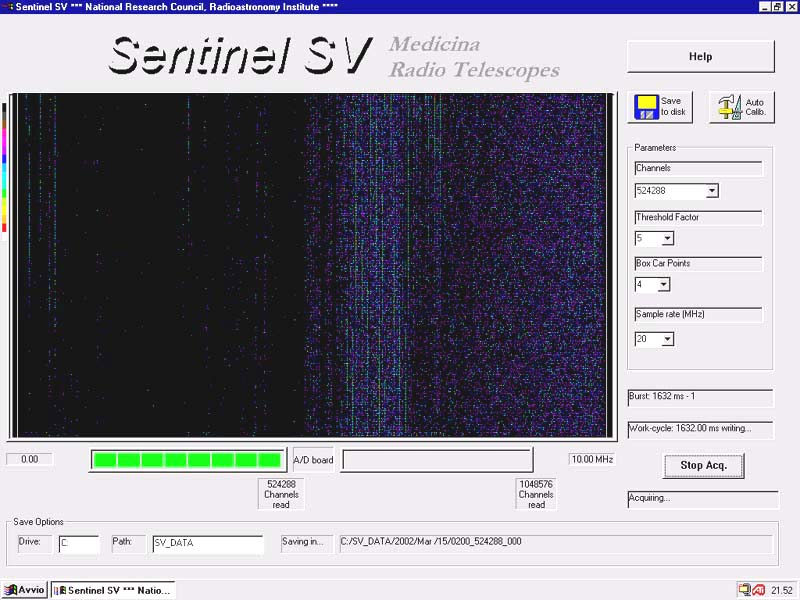
Data acquisition and analysis is one of more complex parts of the whole SETI activities.
It is strongly conditioned by a large number of assumptions that are based on humans evaluations on what signal we are looking for; so, by definition, they are strongly uncertain...
Anyway, if scientis have to take a part in this difficult research, they have to start somewhere...
In SETI microwave approach, where basically we are listening to an artificial non human radio signal coming from the outer space, at microwave frequencies, at least two main problem have to be taken in account :
how to distinghuish between artificial signals and natural radio emissions from astronomical objects (stars, galaxies, pulsars...)
how to separate that signal from the jungle of man made artificial radio signals.
The first point has a quite simple solution. Infact, since now, all known natural radio sources are characterized by wide bands emissions ( not less then hundreds of Hz). This is a characteristic of radiation due to thermal emissions or radiation. Human radio transmission try to concentrate more power possible in the more resctricted band, just to obtain an high efficiency in power radiated signal.
This suggest a good strategy: looking for narrow band radio signals. This give us also another benefit: looking for narrow band signals ( ideally monochromatics ) let us to apply modern DSP (Digital Signal Processing) analysis technics that permit to exctract extremly low level signals inside the noise, even using RF receivers with wide output bands.
Typically, with modern computerized high resolution spectrum analyzers it is possible identify narrow band signals below the noise level, typically up to signal to noise ratio (SNR) of -20dB or less.
Assuming that a narrow band signal is what we are looking for, the risk is to be frustrated by the enormous number of man-made monochromatic signals that our receiving system is capable to listen, expecially if optimized in sensitivity. Infact, even in microwave band, there are a lot of strong radio emissions coming from a large kind of terrestrial or space human sources: PC clock oscillators, terrestrial links, satellite telemetry data links, GPS satellites signals ecc.
So, as in conventional radio astronomy researches, the real problem is the radio spectrum pollution; the solution to this is not easy and still open.
In this case, again we have to make some assumptions: signals that we are looking for is reasonably coming from distant stars and, maybe, from the surface of a planet orbiting around it. This results in a relative motion between the remote transmitter and our Earth based receiving antenna, so we should observe that radio signal is affected by doppler frequency drift.
Taking in account doppler caused by Earth rotation and revolution motion,doppler shift should be a good way to separate radio interferences coming from earth based or near orbiting satellites transmitters, from sources transmitting from a distant sun system.
In our system, digitized receiver output is analyzed by a software developed in Istituto di Radioastronomia di Bologna, a radioatsronomical research center based in central Italy.
It was designed to be compatible, in file format, with more powerful SENTINEL multichannel receivers, actually used in piggy back mode both at their 32mt. radiotelescope and at Arecibo Observatory by Seti Institute.
Substantially it realize a real time FFT ( Fast Fourier Transform ) on the input signal; after some more Digital Signal Processing to compensate receiver frequency response and to improve SNR sensitivity, spectral components above a preset power threshold are saved in a SERENDIP format file. Moreover, results are plotted on computer screen in a Waterfall Display form ; it is a useful rapresentation where on vertical axis there is time ( flowing from up to down ) and in horizontal are represented frquencies.
A screen display example is reported below: in this one the full receiver bandwidth is shown, from DC to 10 MHz.
It is easy to observe some interferences, generated internally to the Acquiring PC itself, as vertical green lines. Obviously they are not affected by any doppler drift.
